Here at DC Histories we love comics, and we try to make sense of the continuity that perplexes, befuddles, and intimidates. We discuss what worked and what didn’t. This week, we’re talking about the premiere superhero team in the DCU, the Justice League.
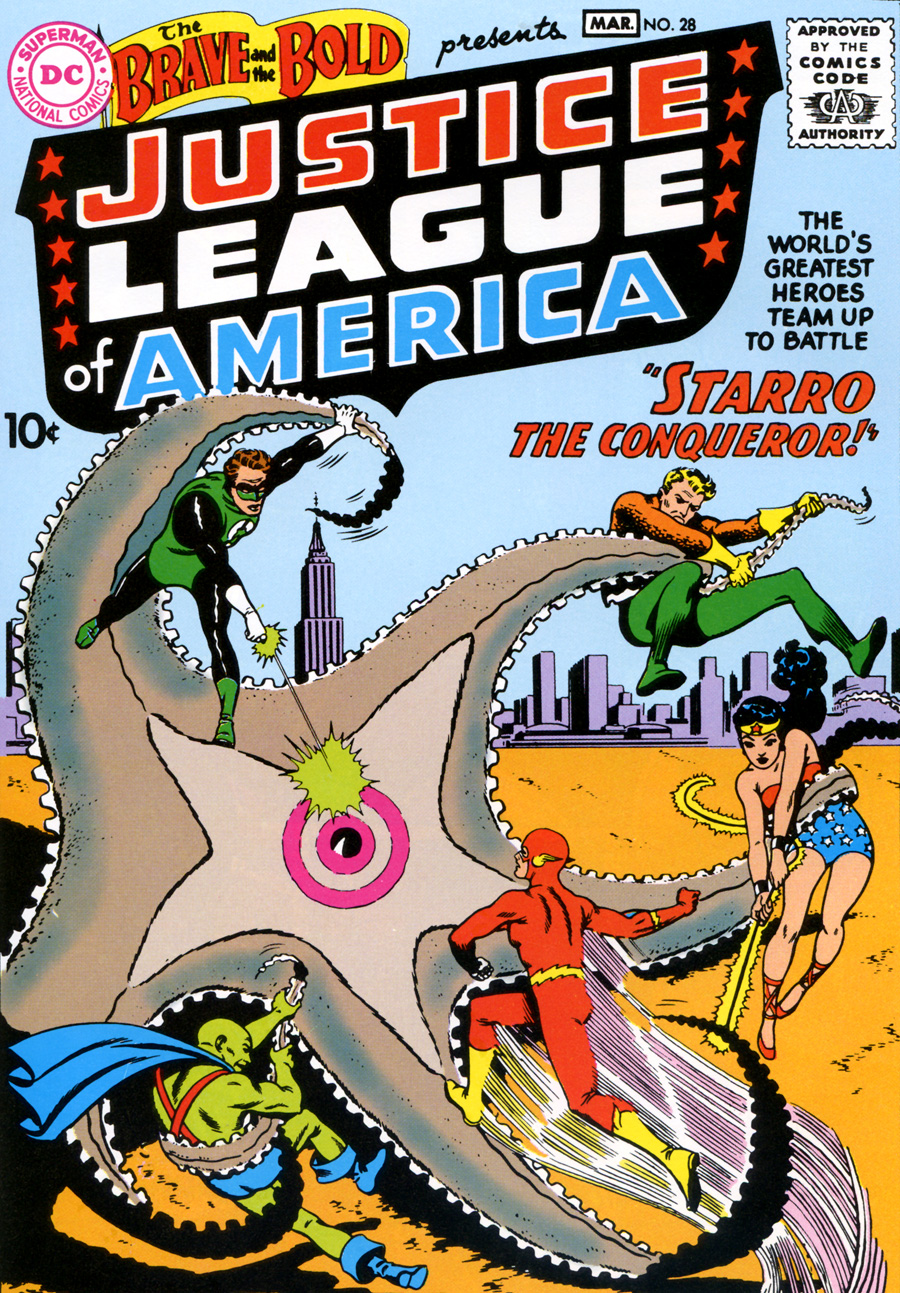
The Brave and the Bold (Vol. 1) #28 (1960) Cover
In 1960, a comic book about a team of superheroes hadn’t existed in the DCU for nine years. The final adventure of the Justice Society of America, the world’s first superhero team, had been published in 1951. Afterwards, superhero comics had mostly faded away, having been replaced with horror, crime, science fiction, romance, and a host of other genres. However, the debut of Barry Allen as the Flash in 1956 had kickstarted a new generation of costumed mystery men. Julie Schwartz, an editor at DC, decided that this generation of heroes needed their own team. To that end, he brought together Gardner Fox and Mike Sekowsky. The two of them created the Justice League of America, which got their debut in the try-out title, The Brave and the Bold.
The first JLA story started with the team having already been assembled. The main teammates were Hal Jordan as Green Lantern, Diana Prince as Wonder Woman, Barry Allen as the Flash, Arthur Curry as Aquaman, and J’onn J’onzz as the Martian Manhunter. Superman and Batman were available to help in a pinch, but they weren’t involved much in this first tale. Together, the Justice League went up against Starro, an alien starfish who could control minds. The five heroes met in their secret headquarters, located in a cavern near the city of Happy Harbor, Rhode Island.
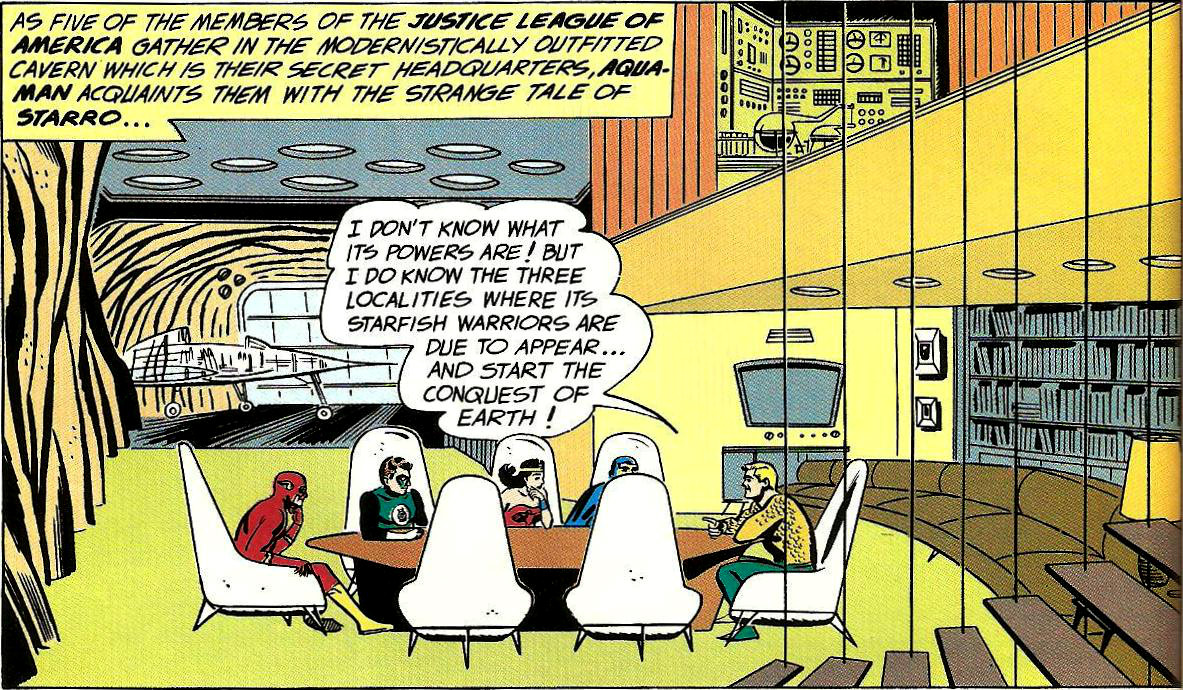
From The Brave and the Bold (Vol. 1) #28 (1960)
Readers were dying to know just how the Justice League came together. This first tale, though fun, wasn’t much of an origin story. It wasn’t until two years later that readers were given the answers they were looking for in the pages of the Justice League’s ongoing series, which launched soon after a three-issue stint in The Brave and the Bold. There, it was revealed that the seven heroes came together in order to battle the Appellaxians, an alien race bent on global domination. The adventurers succeeded. Bruce and Barry suggested that everyone stick around and keep doing the hero thing together.

From Justice League of America (Vol. 1) #9 (1962)
Stick around they did. For the rest of the Silver Age, the Justice League stayed together, battling foes of all shapes and sizes across the universe. Amazo, Earth-3’s Crime Syndicate, Despero, the Secret Society of Super-Villains, and many more came to battle the JLA again and again. There were also the regular crossover with Earth-2’s Justice Society of America, which was always a welcome treat for readers.
Soon, the Justice League outgrew their place in Happy Harbor. Their ranks began to swell and their membership began to change. Some members left the group while others, like Green Arrow, Black Canary, Hawkman, Zatanna, and many more, joined the group for a time. To accommodate this growth, a new headquarters was found. A satellite was built that orbited Earth. There, the JLA could monitor crime from a distance and quickly react wherever they were needed most. The Satellite Era Justice League stretched all the way from the Silver Age to the Bronze Age and contained almost every Earth-bound DC hero of note during this time period. Their old place in Happy Harbor went on to be the headquarters of the Doom Patrol and Young Justice.
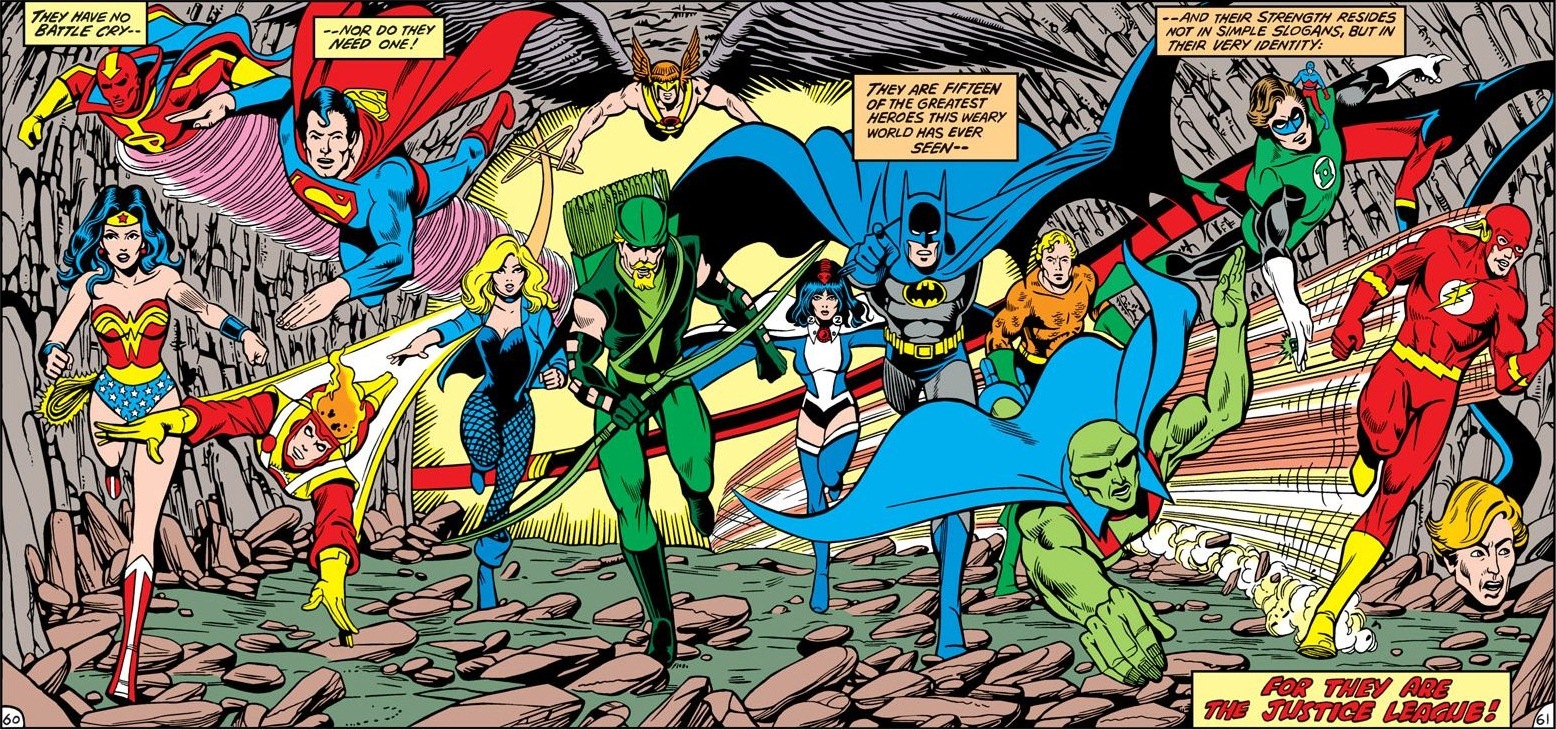
From Justice League of America (Vol. 1) #200 (1982)
Sadly, all good things must come to an end and the Satellite Era was no different. Worried that their characters were too far removed from the common man, it was decided in the DC offices that the JLA would return to Earth. So, during a battle against a Martian threat, the Justice League Satellite was destroyed and its remnants were left to float through space. Not only was the Justice League suddenly without a headquarters, but there was now a ton of debris in Earth’s orbit which future space explorations would have to navigate around.
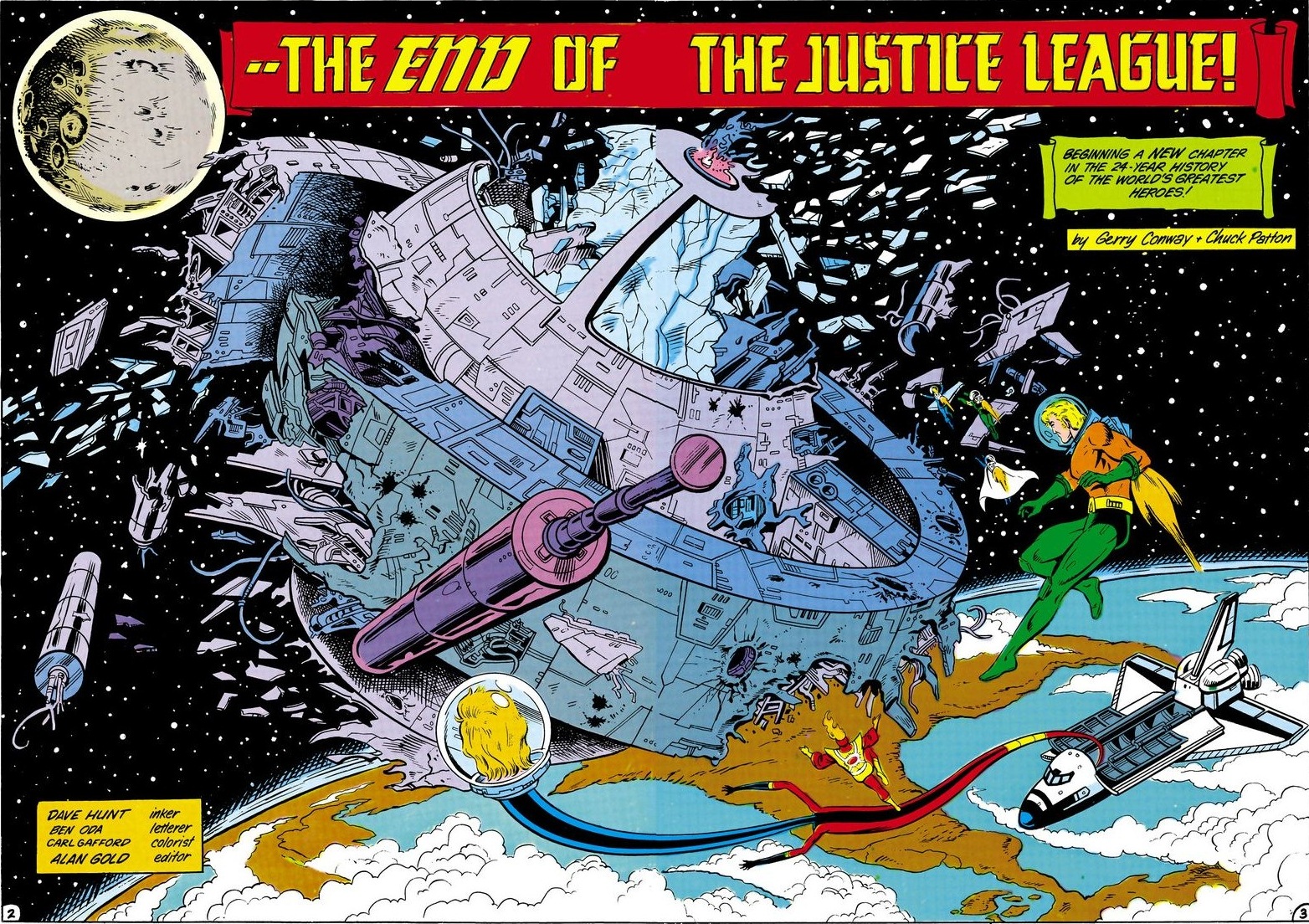
From Justice League of America Annual (Vol. 1) #2 (1984)
Just because the League was down didn’t mean it was out. From the destruction of the satellite came a new opportunity. On the streets of Detroit, a new version of the Justice League was formed. Made up of only a few veterans, like Aquaman, Zatanna, Elongated Man, and the Martian Manhunter, this League was best known as being the most newcomer friendly of any JLA before it. Gypsy, Vixen, a legacy character named Steel, and Vibe all made their Justice League debuts during this incarnation.

Justice League of America Annual (Vol. 1) #2 (1984) Cover
Informally known as the Justice League Detroit, this group wasn’t much liked by the fans. Aquaman turned out to be a terrible leader and was a real dick to most people on the team, especially Steel. He took a hard line approach to training the new members of the League and it wasn’t the most flattering of characterizations. Also, a good contingent of readers didn’t much care for Vibe. It was certainly an admirable attempt to try something new with the Justice League but things just didn’t click.
Just a few years into the Justice League Detroit experiment, the plug was pulled. During the fallout from the Legends event following the Crisis on Infinite Earths, the League’s roster was decimated. Aquaman, Elongated Man, and Zatanna quit. Steel and Vibe were killed by a villain named Professor Ivo. The strain was too much for Vixen and Gypsy to bear so they too quit. J’onn shut down their Detroit headquarters all alone.
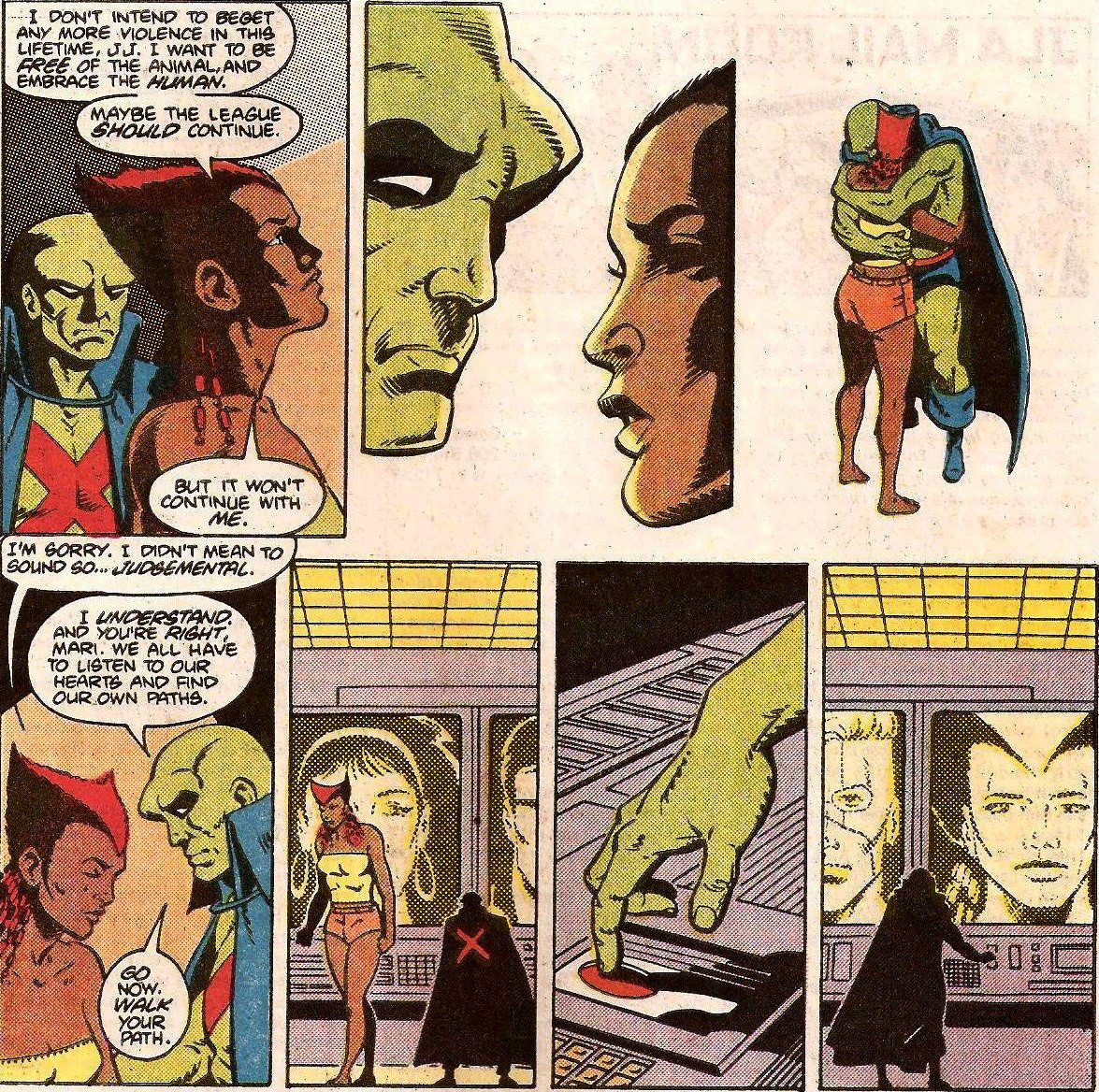
From Justice League of America (Vol. 1) #261 (1987)
As the Justice League was officially folding up shop for the first time in its history, another group of heroes was forming a new League. Joined together in their battle against Darkseid’s forces during Legends, a new group of heroes took the name “Justice League” after Blue Beetle suggested it. It was awfully convenient that no one was using that name at the time.
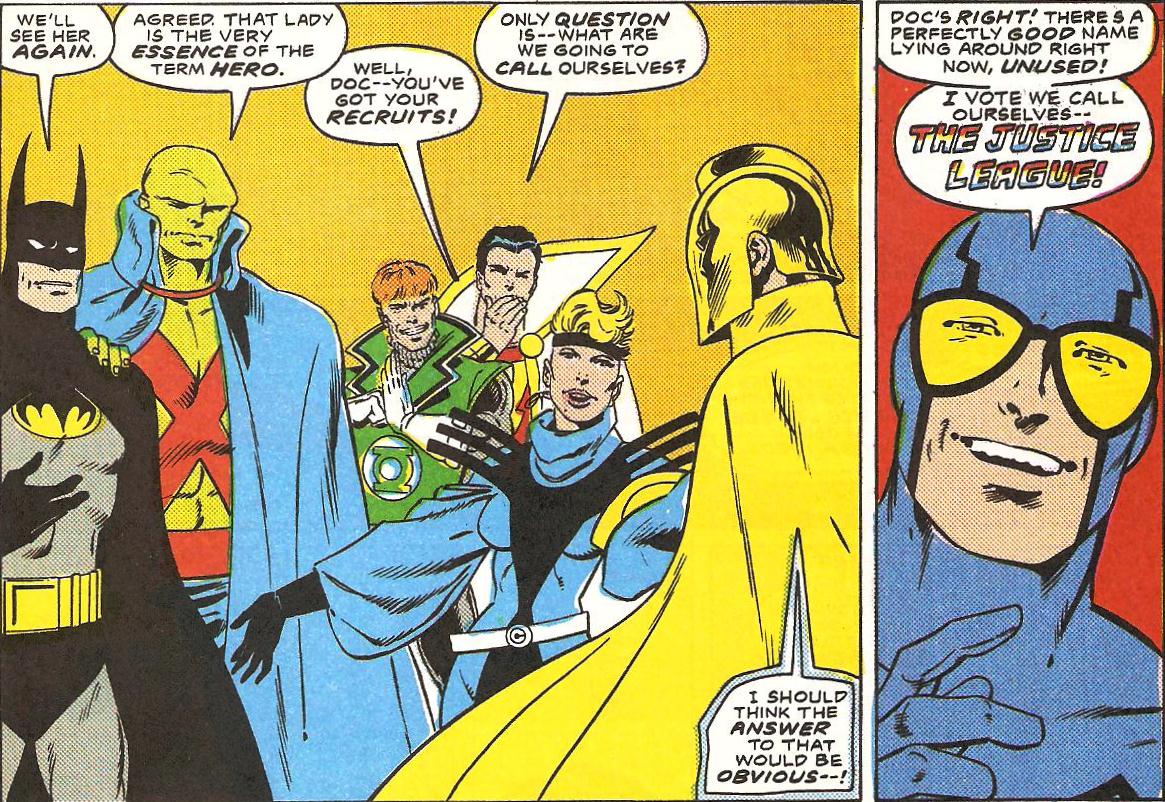
From Legends #6 (1987)
Thus was the Justice League reborn before Steel and Vibe’s dead bodies were even cold.
The Justice League that launched from Legends would, in time, become just as loved as the Satellite Era before it. This is where the Justice League International made its debut. With as much focus on comedy and characterizations as big, world ending action, the creative team of Keith Giffen, J. M. DeMatteis, and Kevin Maguire captured lightning in a bottle. Many characters appeared to be having fun when they spent time together, a novel concept at the time. Everyone seemed to genuinely like each other, save for Guy Gardner. More importantly to the course of the Justice League’s future, this creative team turned the League into a franchise.
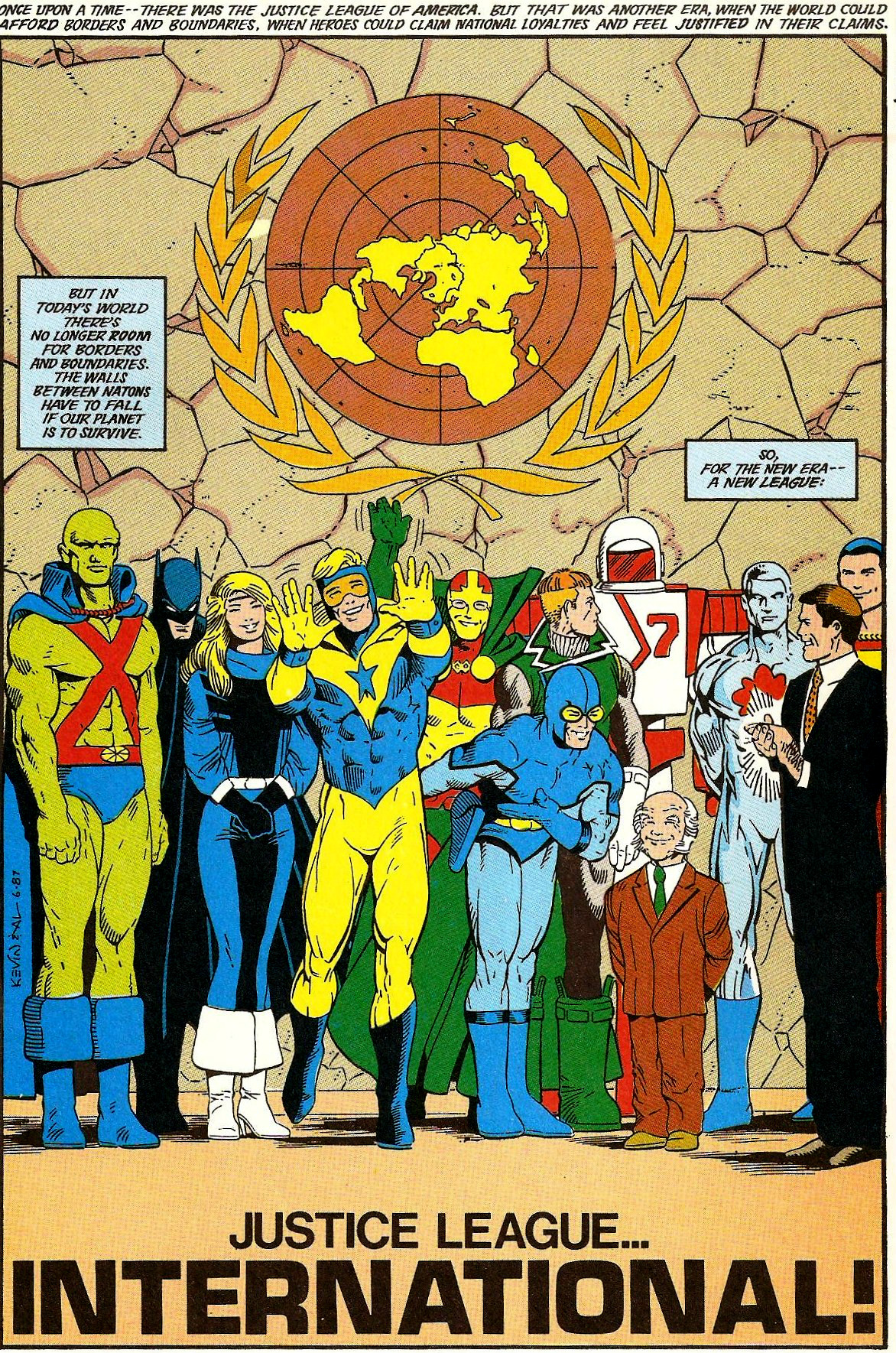
From Justice League International (Vol. 1) #7 (1987)
Now, the Justice League was tied to the United Nations. Each participating country was allowed to have its own Justice League if it so wanted. The League would reside in its own embassy in each country and could teleport around the world to other embassies thanks to a mix of Martian, Apokoliptian, and Green Lantern technologies. Justice League International focused on the League stationed in New York.
Another Justice League book was soon published. For the first time, two Justice League books were being published concurrently. Titled Justice League Europe, this book focused on the Leaguers who lived and worked in the Paris embassy. Alongside League veterans like Wonder Woman, Captain Atom, and Elongated Man were newcomers Wally West, Power Girl, Rocket Red, Animal Man, and Metamorpho.
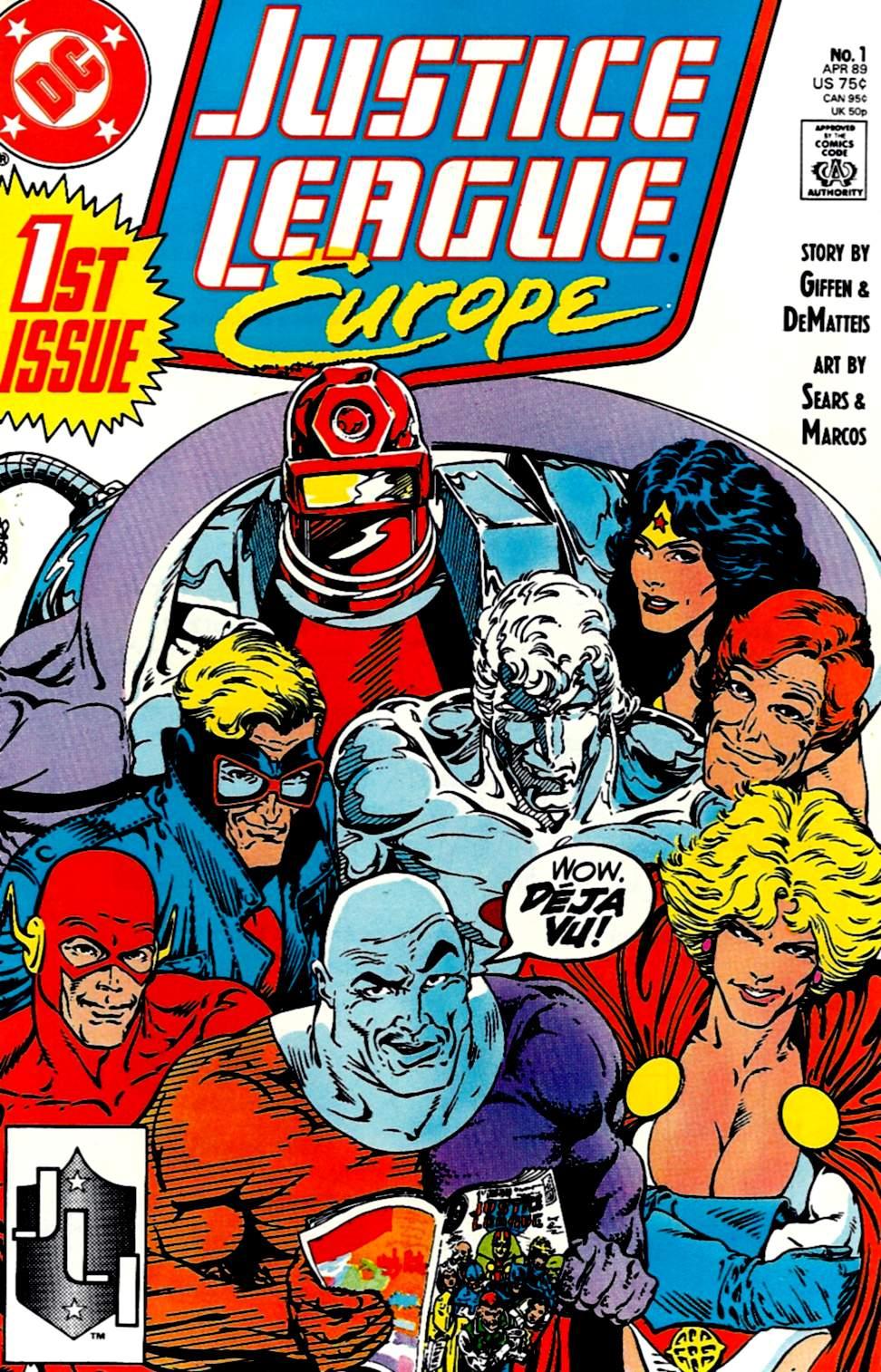
Justice League Europe #1 (1989) Cover
The two titles mostly stayed apart, aside from one crossover tale shortly after the JLE formed.
As with all the Justice League’s various eras, this too came to an end. After several years of writing both titles, Giffen and DeMatteis stepped away from the two Leagues in early 1992. During a 16-part crossover titled “Breakdowns,” the various Leagues parted ways with the United Nations and nearly fell apart. When everything was said and done, both books came away with new creative teams and life resumed. A little bit before “Breakdowns,” Justice League International was retitled Justice League America and shortly after “Breakdowns,” Justice League Europe became Justice League International. It was only slightly confusing. Into this mix of Justice Leagues, a new League formed. Called the Justice League Task Force, it was a group led by J’onn J’onzz that was designed to be the League’s covert ops team. It also reunited J’onn with his Justice League Detroit colleague Gypsy.

Justice League Task Force #1 (1993) Cover
It seemed that, in the DC offices, more Justice Leagues were better than less. To that end, a title called Extreme Justice was launched in 1995 that featured “extreme” heroes who just didn’t want to take it any more. They simply called themselves “the Justice League” and didn’t seem to care that several other Leagues already claimed that name. The “Extreme Justice” branding was simply for the cover and title.
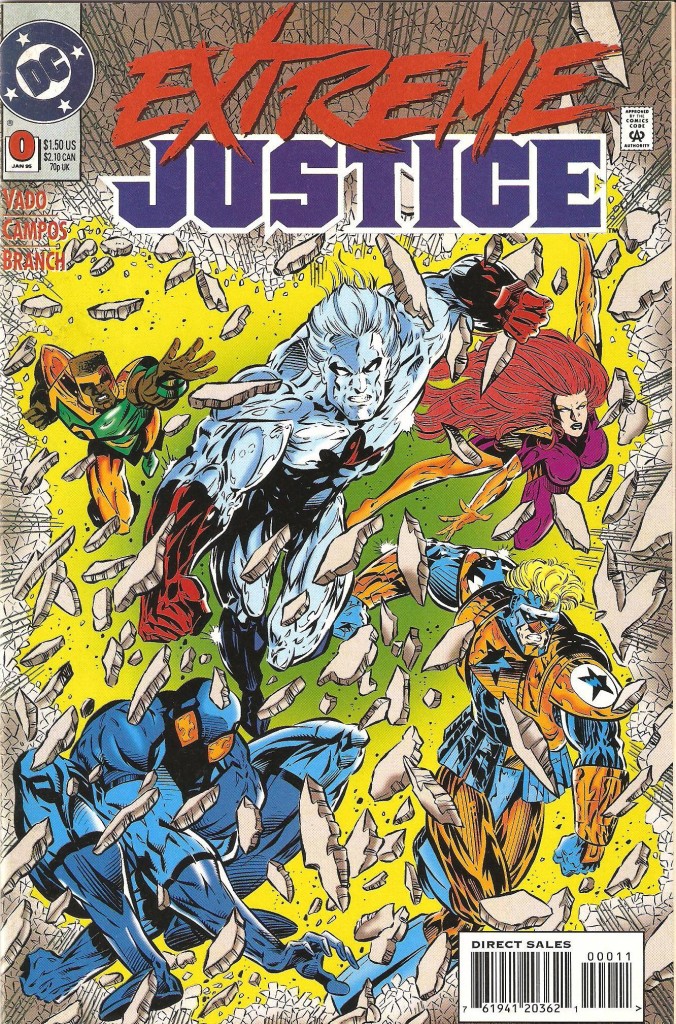
Extreme Justice #0 (1995) Cover
With four ongoing titles in the mid-1990s, the center simply could not hold. Across the board, the quality of each title was pretty poor. Justice League International was cancelled in 1994 during the Zero Hour event but the other three soldiered on. The Justice League America title became full of C-list characters like Nuklon, Blue Devil, and Obsidian. Justice League Task Force was concerned with J’onn training a new generation of Leaguers, such as the Ray, but it was fairly unimpressive. The less said about Extreme Justice, the better. Everything came to a head in 1996. The three remaining titles were cancelled and the Justice League was, once again, without a home.
That all changed with the January, 1997 cover dated JLA #1. Written by Grant Morrison and penciled by Howard Porter, JLA brought the Justice League back to the heights it hadn’t hit since the first few years of the International era but in its own unique way. Made up of the then-current incarnations of the original seven Leaguers from 1960, this new Justice League quickly set about making a new headquarters on the moon that they dubbed the Watchtower. DC’s pantheon had returned to power.
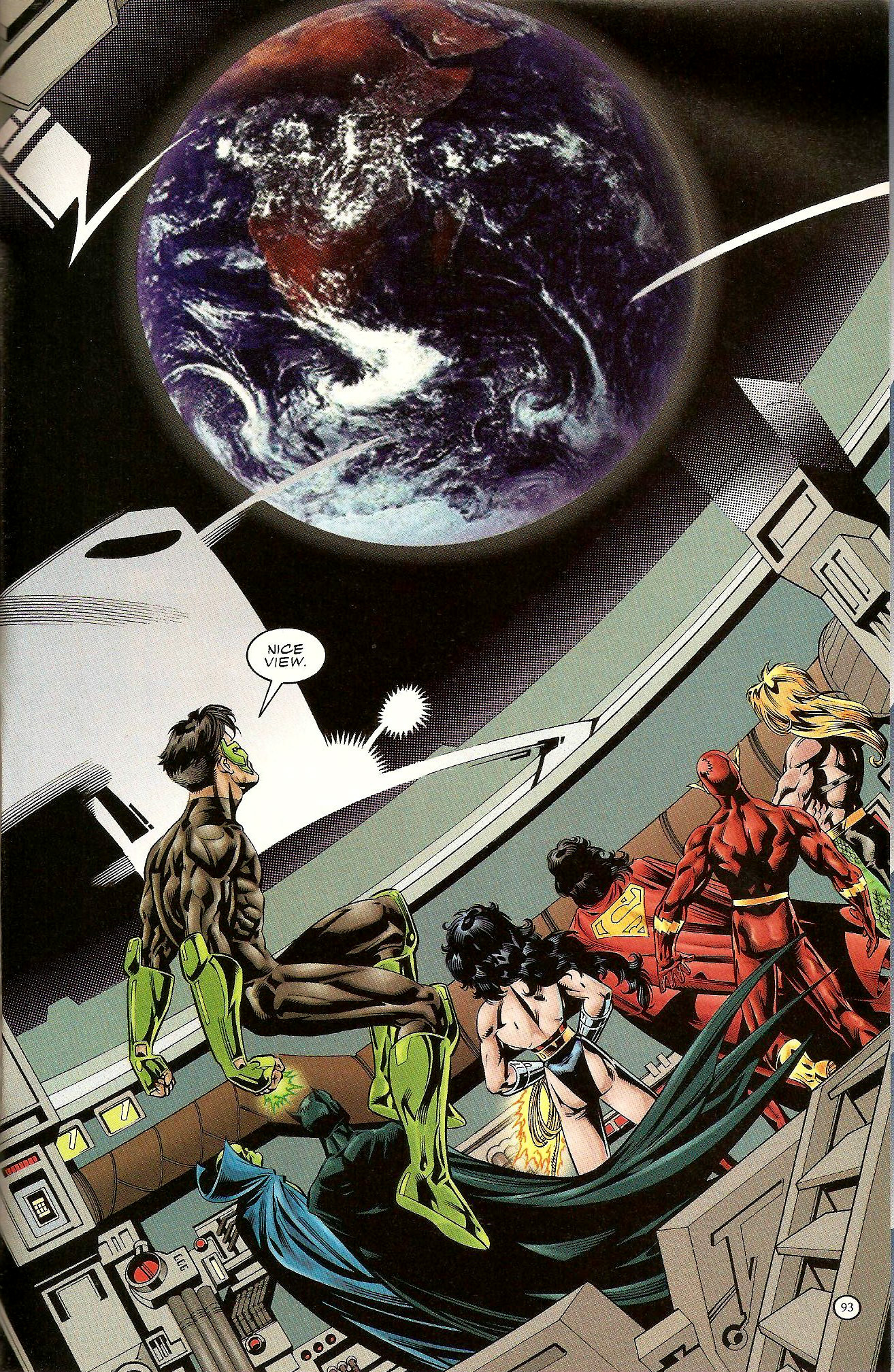
From JLA #4 (1997)
Similar to the Justice League story in The Brave and the Bold #28, it was later shown that the first JLA adventure wasn’t the group’s first outing. They had come together some time earlier to battle against Starro, a nod to that first Justice League story so long ago.
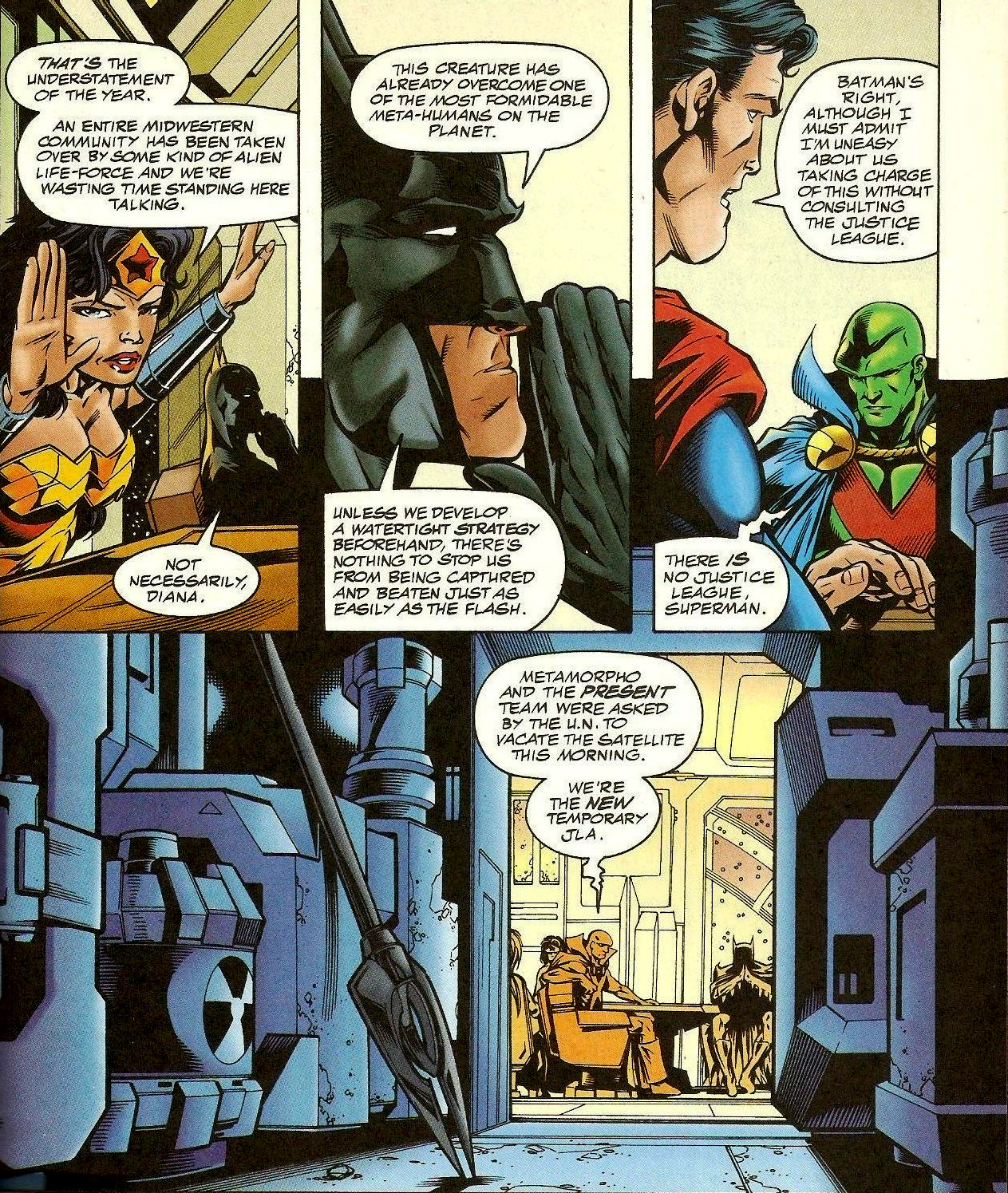
From JLA Secret Files and Origins #1 (1997)
As with every incarnation of the Justice League, the JLA’s membership ebbed and flowed. Soon, the League’s ranks swelled to over a dozen characters, each one bringing something different and unique to the team. Plastic Man joined as did Orion, Oracle, John Henry Irons’ Steel, and the Huntress. After Morrison left the book, writer Mark Waid took over. After him came Joe Kelly, who quickly made his mark on the title by introducing more characters. Manitou Raven, an update on the Apache Chief character from the Super Friends show, became a major character as did several others.
While there was only one version of the League during the late 1990s and into the early 2000s, there was a quiet Justice League International revival in 2003. Mostly a comedy miniseries, Formerly Known as the Justice League featured the reunion of not only Blue Beetle, Elongated Man, Captain Atom, Booster Gold, and more, but it also was a reunion for Giffen, DeMatteis, and Maguire.
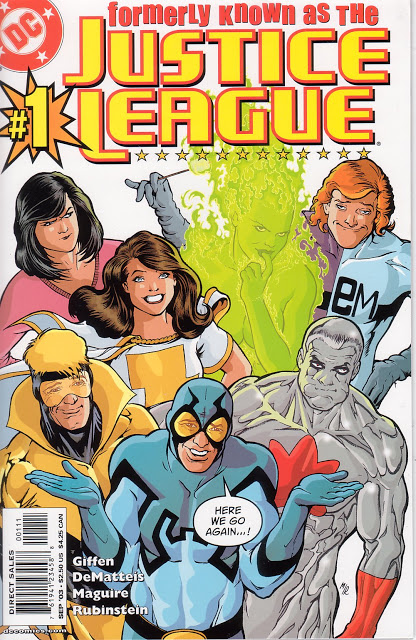
Formerly Known as the Justice League #1 (2003) Cover
The miniseries found these former Leaguers making ends meet by working as a private entity which called itself the Super Buddies. It was a low point for all involved, but a ton of fun to read. This group came back during a multi-issue stint in the pages of JLA Classified a few years later, but continuity changes to the character of Maxwell Lord meant that these characters were no longer viable. Also, Max shot Blue Beetle in the head. But, that’s a whole other story. Most of the characters here also appeared in the excellent Justice League: Generation Lost miniseries from 2010 and 2011, though that wasn’t a Giffen / DeMatteis / Maguire reunion like these two stories were.
During Joe Kelly’s run on JLA, he used a group called the Elite. When they first appeared in the pages of Kelly’s run on Action Comics, the Elite were an organization that wasn’t against killing to make the world a better place. That, of course, went against the League’s charter, but a few Leaguers weren’t against some of the ideals of the Elite. Soon, a group called the Justice League Elite were formed to be the black ops team that the League wouldn’t officially recognize. After a 12 issue miniseries, the group wasn’t seen again.
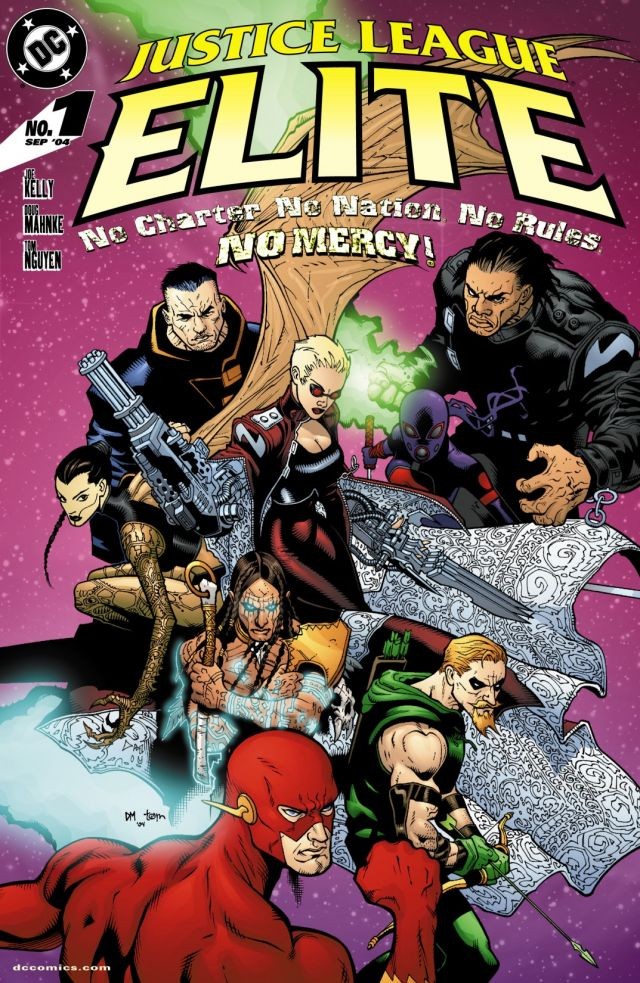
Justice League Elite #1 (2004) Cover
This era of the League ended in 2006. After the events of both Identity Crisis and Infinite Crisis, the League was pulled apart. It simply didn’t function right anymore. Soon, as it had so many times before, the League reformed. A new League, made up of mostly veterans, launched a new volume of Justice League of America. A nice mix of characters made up this version of the League.
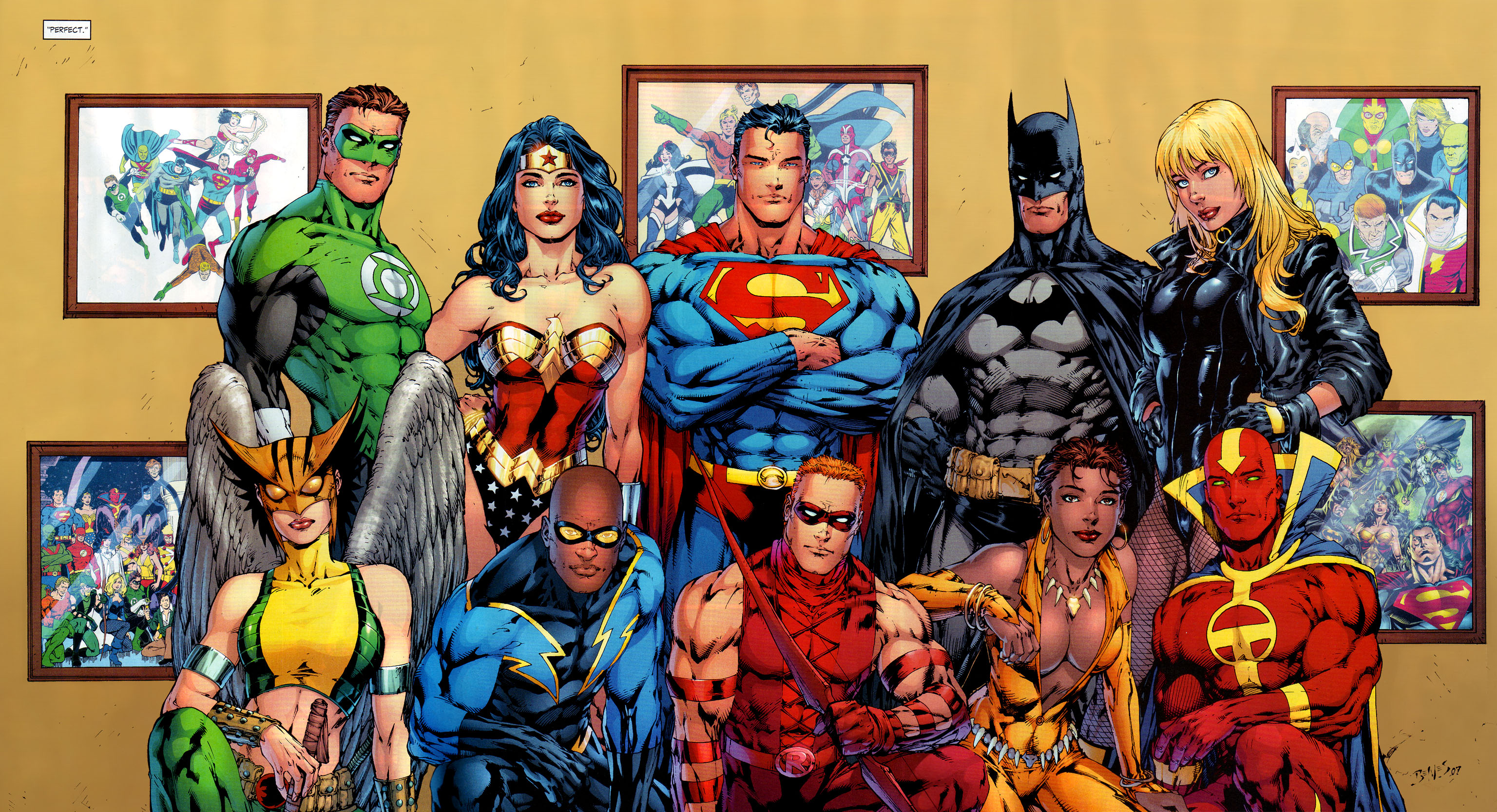
From Justice League of America (Vol. 2) #7 (2007)
As had happened so many times before, this League didn’t last. A revolving door of writers changed the lineup several times. By the time James Robinson took over the title in 2010, Dick Grayson joined the team as Batman, Donna Troy had Wonder Woman’s spot, and Mon-El was filling in for Superman. Cyborg and Starfire were there. Also, Congorilla and the Mikaal Tomas version of Starman weren’t far off on the horizon. It was a different League, to say the least.
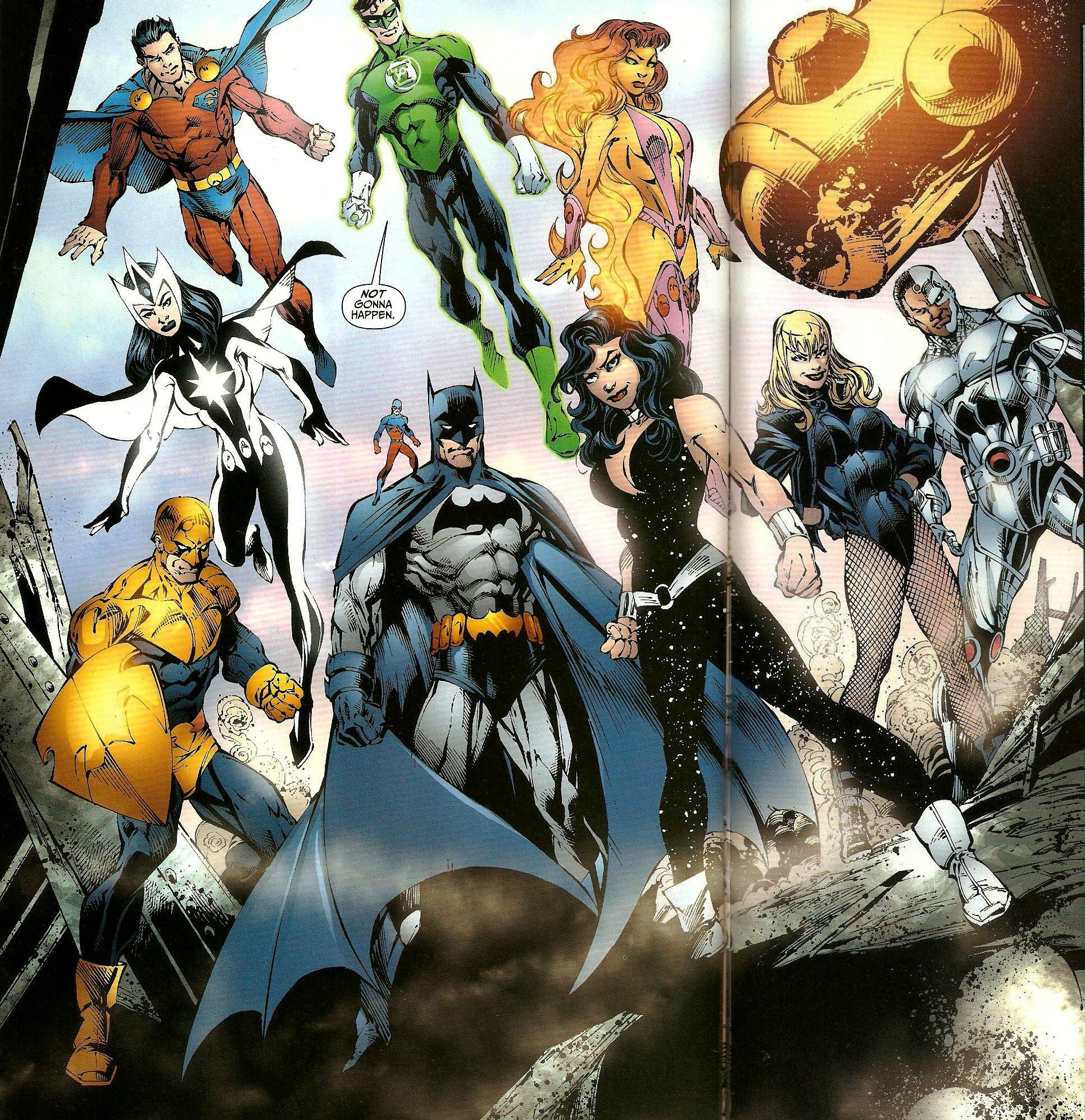
From Justice League of America (Vol. 2) #42 (2010)
Shortly there after, the New 52 hit the DCU. Gone from continuity was every other version of the League. In the line up of the fifty-two new series launched in late 2011 were Justice League, Justice League Dark, and Justice League International. The Justice League title told the story of how the original seven heroes from 1960 first met in this new continuity, though Cyborg took the place of the Martian Manhunter. Justice League Dark was a new group of magic users who had no real ties to the main group. Rounding out the trio was Justice League International, which was an update of the old U.N.-model League from the late 1980s.
Just a year later, Justice League International was cancelled, allegedly for creative and not sales reasons. A while later, Justice League of America launched featuring the United States government’s reaction to the highly powerful Justice League. Recently, the three surviving Justice Leagues became embroiled in a huge crossover dubbed the Trinity War.
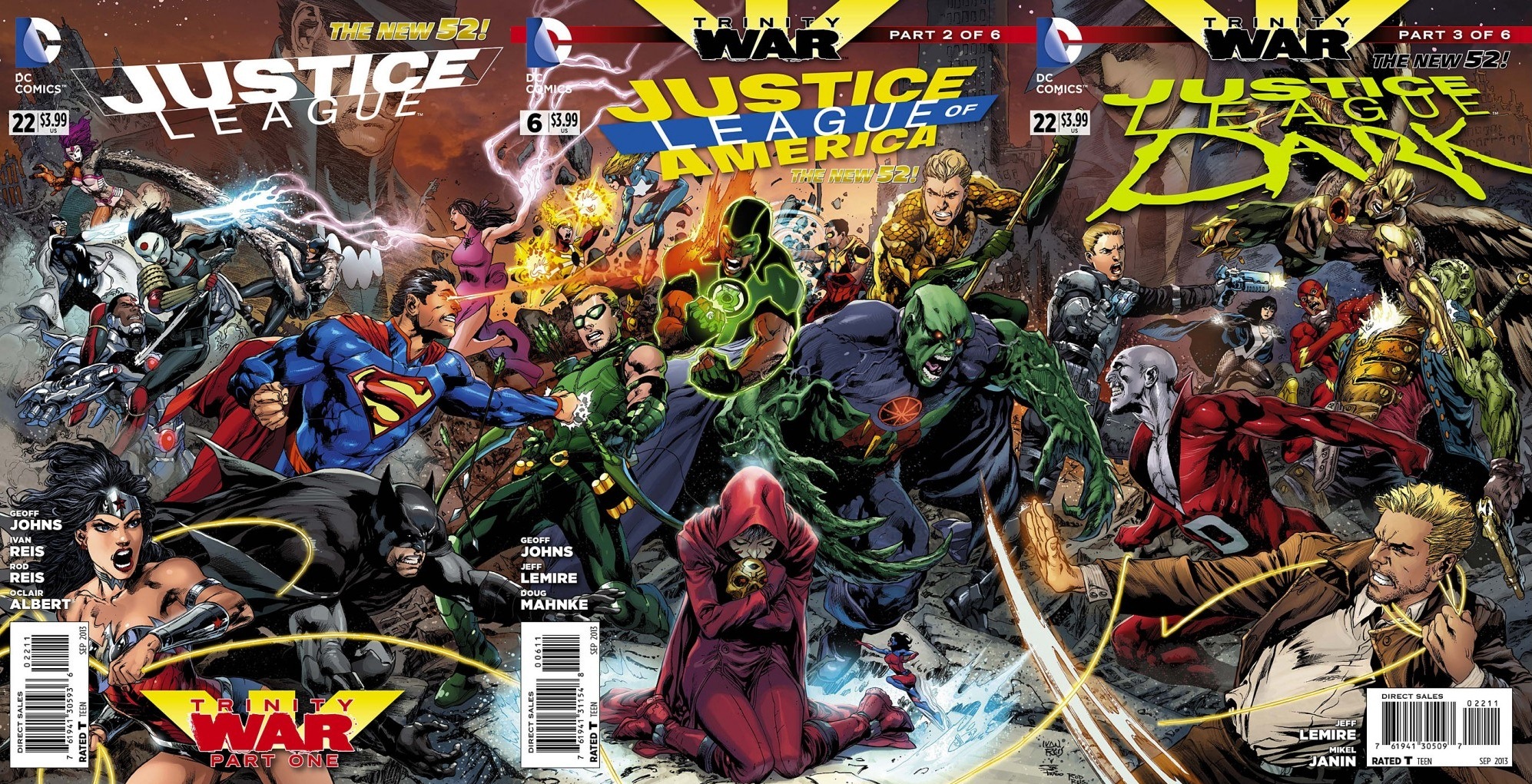
Justice League (Vol. 2) #22, Justice League of America (Vol. 3) #6, and Justice League Dark #22 (2013) Covers
The outcome of this crossover appears to lead directly into the New 52’s first line-wide event titled Forever Evil. What form will the various Justice Leagues take when everything shakes out? Will everyone survive? And what about Justice League Canada? The answers will come in time. But rest assured, though the League may expand and grow, though it may fracture and multiple versions will exist, eventually the League will go back to its seven original charter members and the simple idea of a group of heroes coming together to battle evil that no one hero can handle alone. It’s wonderful in it’s simplicity and it’s an idea that has lasted for over fifty years. The Justice League will always survive.
Jeff Reid’s favorite version of the Justice League remains its first International incarnation. Jeff occasionally talks about that era on Twitter.


After listening to NIN on the way to work today and seeing the extreme justice cover I’m not sure what feels more 90’s to me.
What? You don’t like Booster Gold looking like a mix between Iron man and X-O Manowar or Blue Beetle looking like Spider-Man?
Or whoever ShoulderPads is in the back?
The only thing that picture is missing is pouches. Many, many pouches.
Plus I think the one woman on the team broke her back coming through the wall because anatomically I have no idea what is going on .
Shit, that’s Booster Gold??!
Yup. Check out his DC Histories article for more info on that time and the Top 5 I wrote about DC characters who lost limbs.
I was wondering whatever happened to the JLI in the New52. In-story, is that group just completely ignored and retconned out?
Batman called them a joke in one of the recent issues I read, so I guess they existed and are MIA right now.
Justice League International ended with a lot of mysterious loose strings. All I know is that Booster Gold is lost in time right now
I miss the Super Buddies. Those two mini series were great fun.
So is Gardner Fox’s Justice League of America good reading? I see there is an omnibus due out next year for pre-order on Amazon. How does it match up against other runs of that general era?
They’re very much of their time. I enjoy them from a historical perspective, but they’re not especially engaging. There’s little in the way of actual individual characterization aside from each person’s power set. You might want to check your local library to see if they have any of the various reprints of those comics, such as the DC Archives or Chronicles series, before you go off and buy the expensive Omnibus.
That’s the sort of answer I was looking for. And sound advice. Thanks.
I read a snippet of a JLA issue from that era. I should say short story. If you like reading the old Flash comics or Superman comics from that era I think you’d enjoy JLA. I’m on the lookout for more of it, tho not a $50 omnibus. $20? I’d do that. But @Jeff Reid’s not wrong, they are of that time period. Personal taste will differ.
If you do want a brief taste, Tom Katers tackled late era Gardner Fox Justice League up till Justice League Detroit in his first podcast, Tom Vs. The JLA.
Some of the issues are available digitally as well. For a couple bucks each, you can’t really go wrong.
Or there’s also the “Showcase Presents” series. Volume 1 includes the first 16 issues of Justice League of America plus Brave and the Bold #28-30, and Mystery in Space #75. It’s B&W newsprint, but you get a whole lot of story for little $$$. You may have to settle for a used copy, but it’ll only cost you $10-$15.
That Extreme Justice image looks awful and oh, so, so 90s . . .
My first League and still my favorite was the Giffen/DeMatties years. The annual with Justice League Antarctica is one of the funniest things I’ve ever read . . .
As always, thanks for the great article . . .
My take away from all this; the JLA doesn’t last long in any incarnation. Hopefully Johns keeps the team to the core members (and maybe improves his writing on the title). My first taste of the JL in comics was Meltzer’s run, followed by McDuffy’s. Fun stories with such a good handle on characters and history, even to someone who only followed the shows until that point. Also great art too.
I’ve gotta track down those Giffen / DeMatteis / Maguire assorted runs, they sound like just the thing I’ve been looking for lately. And its payday soon… 🙂 .
The quick resets are mostly a modern thing. The initial Justice League run, from the Happy Harbor Days to Detroit was over twenty years. It’s just kind of hard to communicate that rather long expanse of time while still giving space to offshoots like Extreme Justice.
As for the Giifen/DeMatteis/Maguire years, those books are definitely worth tracking down along with I Can’t Believe It’s Not the Justice League and its’ follow up. As Jeff mentioned, all of them feature great dialogue, fun expressive art, and a super team that actually seems to like each other. On top of that it features one of my favorite portrayals of Batman.
Yeah, the article kinda gives the impression “Every JL book ends. Suddenly”. That might be my own sugar addled, lack of attention span brain…
I’m gonna ask my LCS clerk if he has any of TPBs or something like that. It’s been awhile since I had something to hunt for in the back issue bins.
One thing that kinda depressed me about the New 52 was that there had been a plan to spin the characters and creative team from Generation Lost into their own title. The reboot killed that off. Still, we did get a great maxi series out of it.
Ah, you’ve encouraged me to revisit Morrison’s JLA. Good stuff.
While Morrison’s is my favorite incarnation and run, THIS remains my all-time favorite JL moment.
https://ifanboy.com/wp-content/uploads/2011/11/Justice-League-5.jpg
@Nightwing97, I’ve got a funny story to tell you relating to that link if you’re interested…
@IthoSapien Sure, I’m all ears.
My first year of college. I met my 5 roommates, all of whom had some experiance with comics. One of em loved Batman and Spider-Man (Batman b/c he was dark and broody, Spider b/c he had all the cool villains. I didn’t get it either). So I told him I like GL, to which he said was stupid. A few weeks pass, and I wake up and find this image all over my dorm:
http://green-lantern-butts-forever.blogspot.com/2011/01/lanterns-vs-bats.html
I got really pissed about the one over my bed on the ceiling and in my bathroom cabinet. I kept tearing them down and he kept putting them up. This lasted 2-3 days. Eventually I just left them up and he got bored with it. So whenever I see GL and Batman hit each other I always think of those days at my dorm.
Haha that’s pretty funny (probably not for you at the moment, though). Also seems interestingly elaborate for simply liking GL.
That reminds me what’s going on right now with my friend Angelica. I told her that two of my favorite heroes were Batman and Daredevil and she asked, “Aren’t they like the SAME THING?” I obviously yelled blasphemy and she called me a dork for the rest of the day. This was about two years ago.
Yesterday… she got word of the latest bit of casting news… She’s been bombarding me with those stupid meme pictures and tweets from our friends laughing ALL DAY… I doubt that I’ll live it down…
I guess he was getting back at me for something I did (I asked one of my other roommates about it last year after I moved out. I guess first guy just couldn’t stand me for some reason. His words: Aggh, I can’t stand ######. Just something about him makes me want to… I don’t even know. He’s the only person to ever get under my skin like that”. I swear to this day, I have no idea what I did. Some people though just don’t like you for whatever reason).
That sounds rough what’s happening to you, but I went through the same thing for years during school. This lifestyle comes with sacrifices man. Just act it doesn’t bother you (believe me, I know it does). Hell, repeat the jokes. But don’t let people see how much it bothers you. Be like DD or Batman, tough and unafraid of sh*t!
An idea occured to me not long ago; an all-female JL like Marvels X-Men (which now strikes me as ironic). Anybody have ideas for the roster? I’ll start:
Batwoman
WW
Mera
Supergirl
Vixen
Black Thunder
Stargirl.
Shoot, I don’t know if Black Thunder exists in the New 52. I’d replace her with Jade but then I remembered “Earth 2”.
In that third image (from Justice League of America (Vol. 1) #9 (1962)) , Superman’s posture makes me think of Tony Soprano.
“What, evil? Fuggedaboudit!”
I would love to see DC do a self contained JLA book set in that universe, it could work the way Adventures of Superman does or video game titles they have out now. I bet it would sell, that along with Justice League International are the two incarnations i am most familiar with. The JLA Title to be had the most attractive story telling and characters i still miss that book.
I really love how casual Batman was about the whole thing: “We ought to form a club or society…”
Seems like he just wanted to hang out. “Justice League?! Guys, guys… I was thinking more like parcheesi or maybe bridge.”
Well, the introvert deserves some company too! 🙂